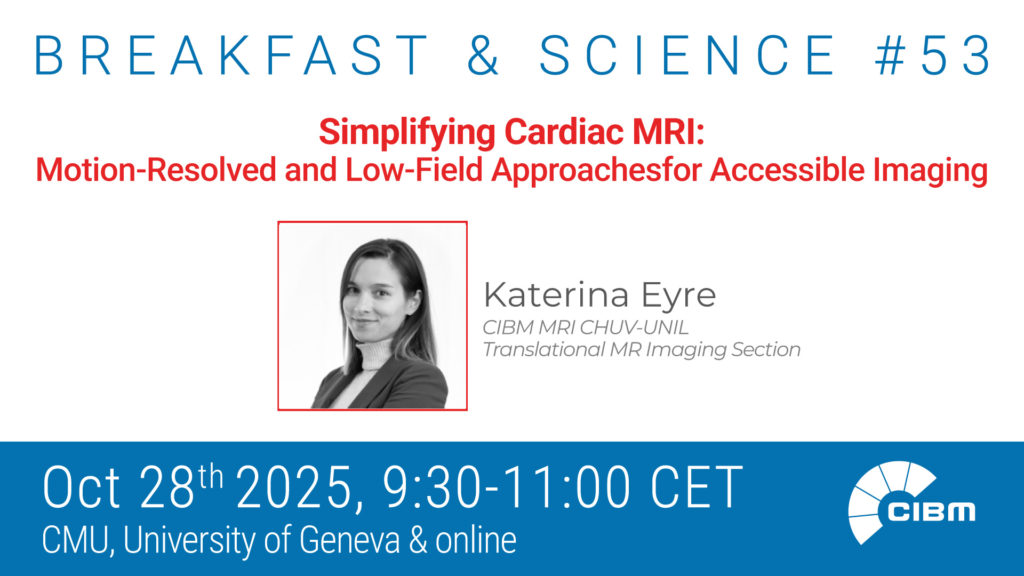
On the 28th of October 2025, the CIBM Breakfast & Science Seminar 53, was given by Katerina Eyre, from the CIBM MRI CHUV-UNIL Translational MR Imaging Section. The event was chaired by Jonathan Wirsich, MRI Operational Manager and Research Staff Scientist. CIBM MRI UNIGE Cognitive and Affective Neuroimaging Section.
Simplifying Cardiac MRI: Motion-Resolved and Low-Field Approaches for Accessible Imaging
Abstract
Cardiac magnetic resonance imaging (CMR) provides comprehensive information on cardiac anatomy, function, and tissue properties, but its clinical adoption remains limited by long scan times, motion sensitivity, and complex setup. This presentation will highlight recent advances aimed at simplifying and accelerating CMR through free-breathing, ECG-free, and motion-resolved methods such as the Free-Running and Multitasking frameworks. Building on these developments, I will discuss how low-field MRI offers a complementary path toward accessible and patient-friendly imaging, with examples including ongoing work on oxygenation-sensitive CMR at 0.55 T. Together, these approaches illustrate a pathway from technically complex acquisitions toward robust, efficient, and widely deployable cardiac MRI.
Katerina Eyre
About the speaker
Katerina Eyre-Yerly is a postdoctoral fellow specializing in cardiac MRI research. She earned her Bachelor of Science in Biochemistry from the University of Toronto, followed by a Master’s degree in Biomedical Engineering from the University of Göttingen, where she focused on the development of cardiac vessel grafts. She later completed her PhD in Experimental Medicine at McGill University, contributing to the clinical translation of novel cardiac MR imaging techniques through research studies. During her doctoral work, she collaborated on the Multitasking framework developed at Cedars-Sinai and on oxygen-sensitive MRI techniques pioneered in Montreal.
In her current role, Katerina is advancing cardiac imaging on a low-field MRI system, with a strong focus on oxygen-sensitive imaging methods. She is also leading efforts to establish and manage a multi-centre, multi-vendor clinical trial utilizing the free-running framework sequence on a 1.5T MRI scanner. Her work bridges basic science and clinical practice, fostering collaboration between researchers and clinicians to improve patient outcomes.

